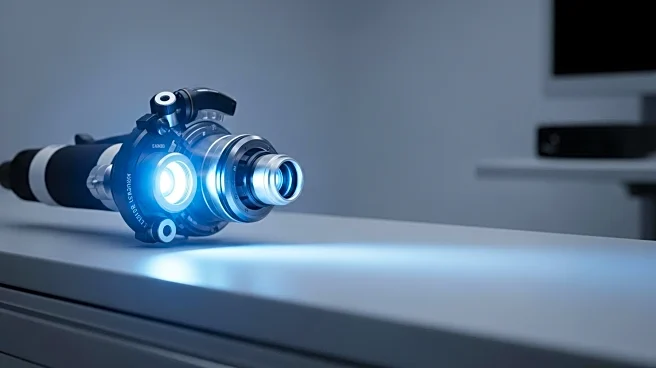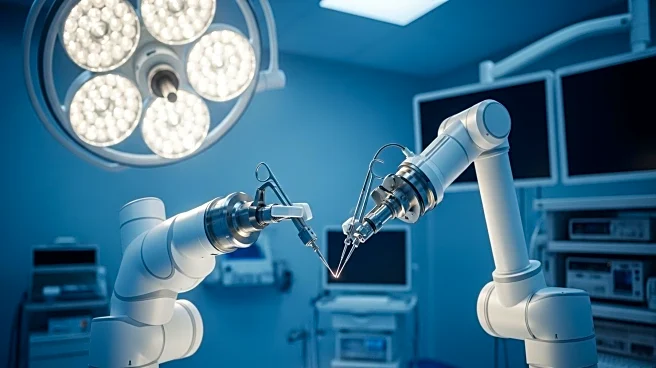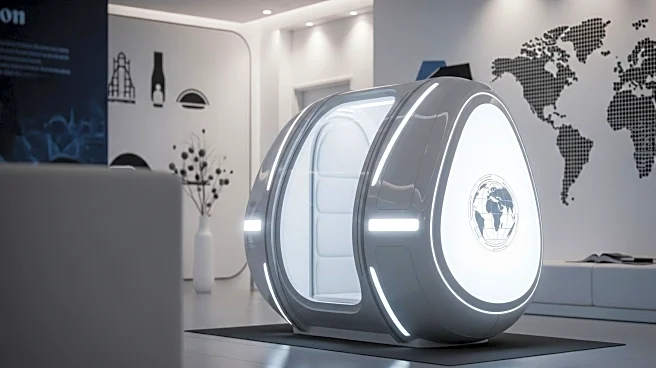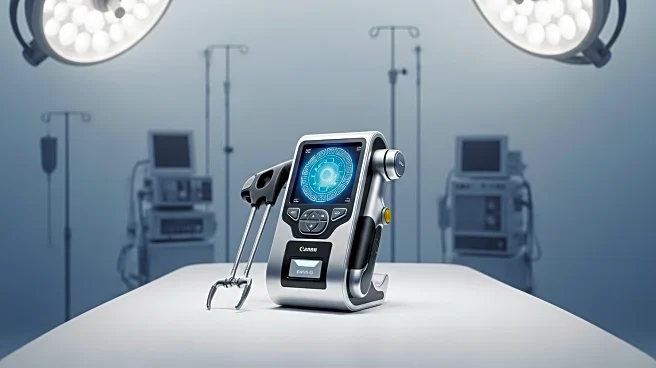What's Happening?
Medtronic has launched a U.S. clinical study to evaluate the safety and effectiveness of its Hugo robotic system in gynecological surgeries. This marks the third investigational device exemption study by Medtronic in the U.S., following successful trials in urology and hernia repair. The Hugo robot is designed to assist surgeons in performing minimally invasive procedures, potentially enhancing precision and reducing recovery times for patients. The study aims to gather data on the robot's performance in gynecological applications, which could lead to broader adoption in surgical practices.
Why It's Important?
The introduction of robotic systems like Hugo in gynecological procedures could significantly impact the field of surgery by improving outcomes and efficiency. If successful, this study could pave the way for more widespread use of robotic assistance in surgeries, potentially reducing hospital stays and improving patient recovery times. The healthcare industry stands to benefit from advancements in surgical technology, which could lead to cost savings and improved patient care. Medtronic's focus on expanding the applications of its robotic systems underscores the growing trend towards automation and precision in medical procedures.
What's Next?
Following the completion of the study, Medtronic may seek regulatory approval to expand the use of the Hugo robot in gynecological surgeries across the U.S. This could involve further trials or data collection to ensure compliance with safety standards. The results of the study will be closely monitored by healthcare providers and industry stakeholders, who are interested in the potential benefits of robotic-assisted surgeries. If successful, Medtronic's Hugo robot could become a standard tool in gynecological procedures, influencing surgical practices and training programs.
Beyond the Headlines
The use of robotic systems in surgery raises ethical and practical considerations, such as the need for specialized training for surgeons and the potential impact on surgical jobs. As technology advances, the healthcare industry must address these challenges to ensure that robotic systems are integrated effectively and safely into medical practices. Additionally, the cost of implementing such technology could be a barrier for some healthcare facilities, necessitating discussions on funding and accessibility.










